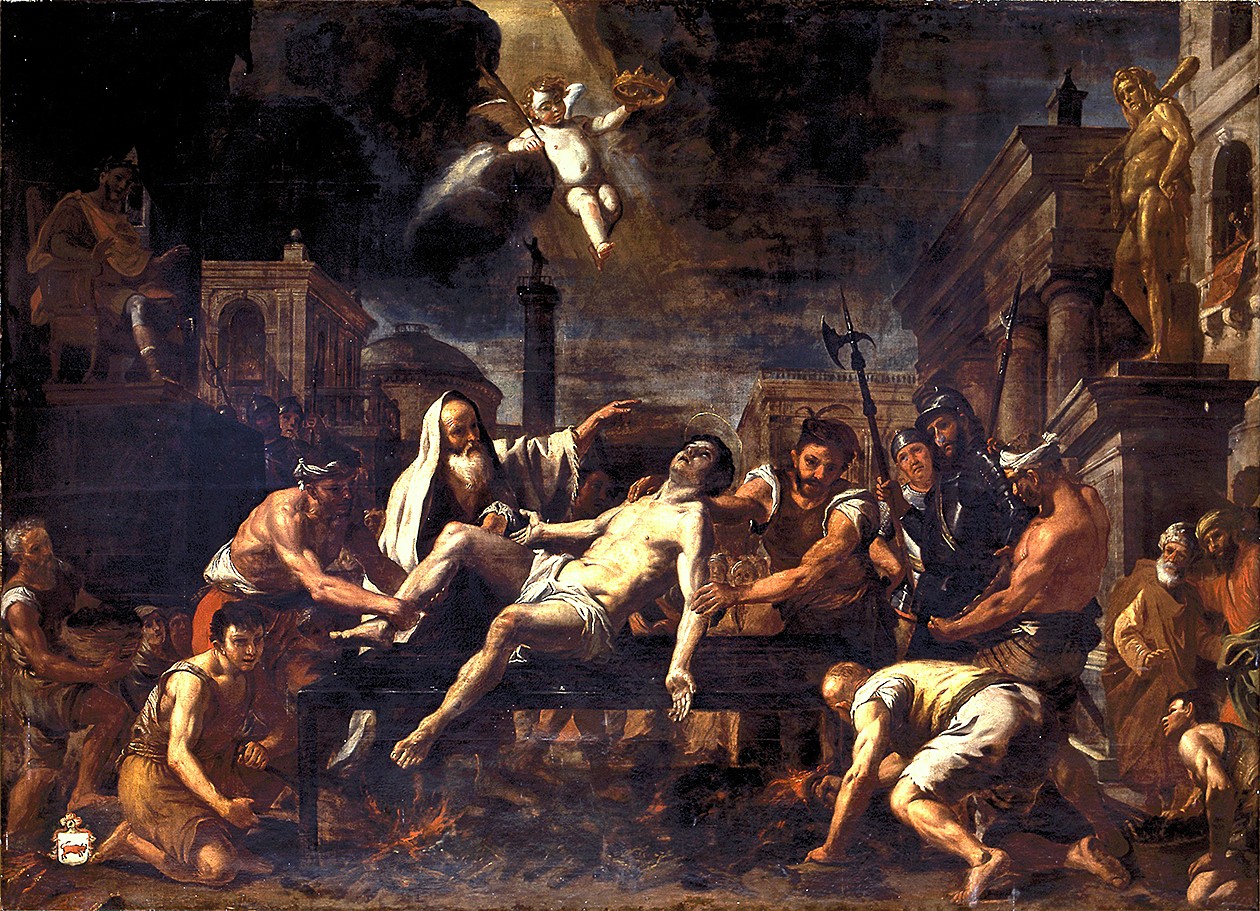
St Laurence: the struggle between light and darkness
Second Reflection on the Titular Painting of the Collegiate Church of Saint Lawrence, Birgu
Let us return to the choir of Birgu’s Parish Church and sit in one of the seats where the canons usually gather to pray the Liturgy of the Hours. In that relatively dim environment, we once again lift our gaze to the masterpiece that Preti created through the interplay of darkness and light. We can imagine that between them, darkness and light are engaged in a struggle — but even here, as in the mystery of the Incarnation of the Eternal Word as described by the Evangelist John, “The light shines in the darkness, and the darkness has not overcome it” (John 1:5).
In the time of Saint Lawrence, and as we also see in this scene, darkness represented paganism and violence—both the violence of war and that of the macabre spectacles in amphitheatres: the gladiators, wild beasts, and the condemned, some of whom were martyred for their faith. It was the darkness of baseless persecution, the darkness of ignorance, which, in its arrogance, keeps humanity from recognizing the light.
Today, as Christians enlightened by Christ, we are called to confront the darkness of the culture of death and of the throw away culture that discards people when they are no longer deemed useful to society. The darkness of antagonism, of belief in magical powers and other superstitions—extremes that often blend when true faith is abandoned, giving way to a new form of paganism. Then, there is the darkness of a mentality that demands everything now and immediately—“life is now” … an illusory mindset that is actually a myth that blinds us into living only for today, with no care for tomorrow. It is the myth of eternal youth, which leads us to resist growing up and taking responsibility for others: in the family, the parish, the workplace, and society in general. It is a mentality of living as if we will never die. But such a mentality creates a dark void of meaninglessness in life—an escape from the reality of death because, once belief is lost, man no longer knows what lies beyond the curtain that falls on the drama of his life. And darkness descends.
Even though the fear of the unknown remains very relevant, for those who believe, at least they know they are not alone—not forgotten or abandoned to face this vast universe by themselves. In the heart of darkness, Preti shows us Saint Lawrence shining. And he shines because he lifts his gaze toward the Light.
It is this same light of Christ which, in the words of the Second Vatican Council, illumines the mystery of the human person himself (Gaudium et Spes, par. 22). Therefore, before this immense canvas, we too can allow the mystery of you and me to be illuminated, so that we no longer look into the mirror and see only the darkness in the hollows of our eyes, but instead allow the Lord to plant in our minds and hearts what He sees in our eyes: our tears, our hopes, our desires, and our fears… But He also sees what He has placed within us: a great treasure of love in a jar of clay—true, yet every precious thing is fragile, and every love requires care.
Truly, God’s love for us shows us how poor we are before Him, but because we are poor, because we are empty, because we are stripped of pride, we can welcome His love for us—and let it become the flame and the energy that powers the engine of our life and illumines our darkness, as with St Augustine we prayer:
“O Truth, the light of my heart, let not my shadows speak to me!”
St Augustine, Confessiones, 12.10



